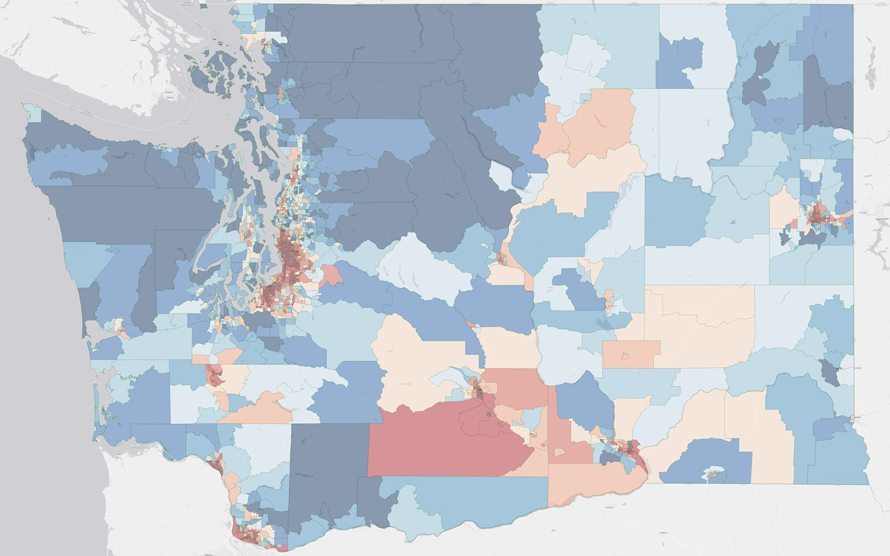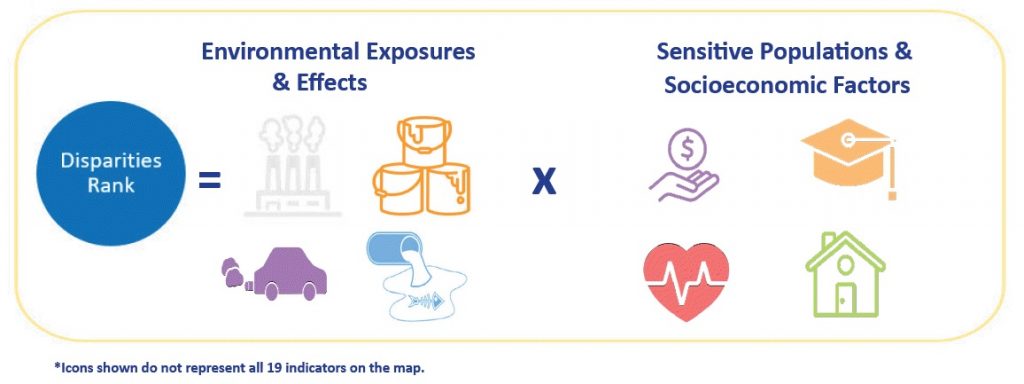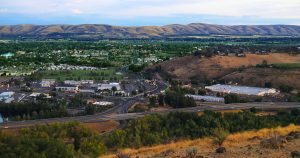Where you live, your income, race or language ability shouldn’t determine how healthy you are. For the first time, people in Washington state will be able to compare how their neighborhoods rank for environmental health risks with the help of a new interactive mapping tool.
The Washington Environmental Health Disparities Map, offers policy leaders and advocates new, data-driven insights into where people experience the greatest environmental health risk factors in Washington. These factors can contribute to inequitable health outcomes and unequal access to healthy and prosperous communities.
The interactive map provides detailed, neighborhood-level data comparing and summing environmental health risk factors in communities across Washington state. This is the first time that a tool has been developed to quantify the cumulative impact of multiple environmental risk factors faced by communities across Washington state into an impact “score” for each tract, which can be used to rank communities on their relative environmental health risk factors.
It estimates a cumulative environmental health impact ranking for each census tract that reflects pollutant exposures and factors that affect people’s vulnerability to environmental hazards. The mapping tool combines measures of pollution, proximity to potential environmental hazards, population health and socioeconomic status. It combines data from eight sources in the Washington Tracking Network to map 19 census tract-level indicators of community health, showing which neighborhoods face greater burdens of environmental health risks.
Front and Centered built and facilitated a unique cross-sector partnership to advance this project in response to the interest of communities. It was shaped by input from communities of color across Washington, including immigrants, tribes, farmworkers, the elderly and other groups disproportionately impacted by pollution. For more information about this, read about the 2017 Listening Sessions.
University of Washington Department of Environmental & Occupational Health Sciences led the scientific development of the tool in collaboration with the Washington State Department of Health, which hosts the tool, the Washington State Department of Ecology and the Puget Sound Clean Air Agency. In February 2018 we held a symposium at the University of Washington to advance the work.
This tool provides policymakers, community leaders and Washington residents key evidence to inform and shape high-priority investments to reduce environmental health impacts on Washington’s communities and improve access to clean air, clean water and a healthy environment throughout the state.
|
Try the Environmental Health Disparities Map now in the Washington Tracking Network’s Information by Location site or learn more about the tool.
|
Read the Environmental Health Disparities Map Report (PDF) describing the methodology or visit the Department of Environmental Occupational Health Sciences page.
|
|---|---|
|
|
|
|
Download the two page handout on the Washington Environmental Health Disparities Map
|
Read the brief on policy applications (PDF) of the Washington Environmental Health Disparities Map
|
|
|








